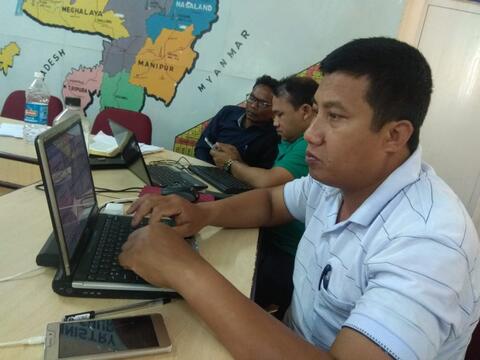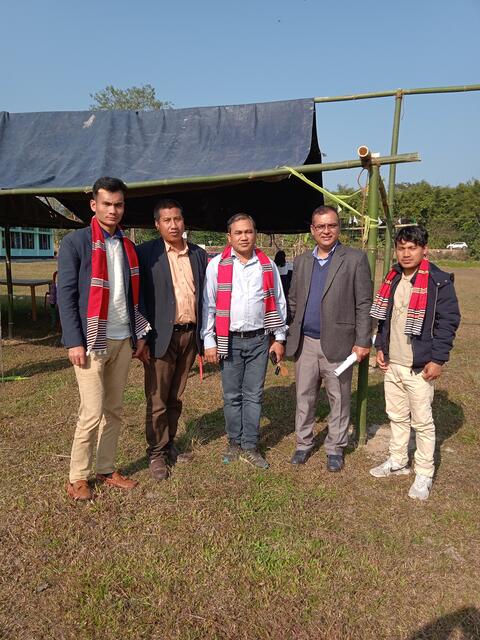Mising Translation Brief
Mising people
The Mising people live in the Indian state of Assam and Arunachal Pradesh and are mainly situated in the 10 districts of Assam: Dhemaji, Lakhimpur, Biswanath, Sunitpur, Tinsukia, Dibrugarh, Sivosagar, Jorhat, Golaghat&Kamrup Metro and Namsai& East Siang of Arunachal Pradesh. The traditional occupations of the Mising community included the cultivation of paddy, urad, mustard seed and fishing.Majority of the community is self-defendedand weaving clothes, farming silkworm secondary occupation of the community. Paddy grain & wooden logs were the Mising people’s major economic resource, which were controlled by individual ownerships. But, at present, they are far removed from their traditional occupations and have moved into other occupations according to the opportunities. They are also engaged in animal husbandry, small business, Government/private services and industriallabors. The Mising community is traditionally Animist, but now adays Hinduism and Do:nyi-Po:lo(Sun-Moon) have encroached the former tradition. The Mising have oral traditions, such as folklore and folk songs. Both men and women sing folk songs at the time of the festival and marriage, sad song on funeral rites.
The Mising people speak a dialect called Mising. According to Ethnologue the Mising is classified as Tibeto- Burman, Mising. The people use two languages to communicate– Mising as their mother tongue and Assamese as a second language with outsiders. As per the 2011 census of India, the literacy rate of Mising community was as high as 60.1% in second language which is Assamese.
What is the primary function/purpose of the translation?
The purpose of the translation is for Mising speakers to be able to understand the Word of God in a language they can understand adequately. They envision to use it in the church services, Bible studies and in for personal devotions. The potential readership is realistically the younger generation and men and women in the village who are already literate. Illiterate people will most likely benefit and use the audio Bible rather than the printed Scriptures. The Mising language group covers 20 Lakh in Assam & 50 thousand speakers in Arunachal Pradesh.
Who is asking for the translation?
Mising believers have been using Assamese Bible past 40-45 years in the church services. But the old, aged believers are finding difficulties to understand the Word of God, since most of them do not properly understand Assamese. So, believers were keep requesting Bible on own dialect, God of heaven heard their prayer and spoke to MisingChristian Literature Society to find out some organization who help to do Bible translation. So, the leaders of Mising Christian Literature Society approach NEISEL-IEM for helping them to translate New Testament in their language.
Who is going to use the translation?
Right now, approximately more than 10,000 believers are found among the Mising community in 10 districts of Assam. There are no accurate details of how many Mising believers are in Arunachal Pradesh, but people randomly reported 100-150 scattered believers probably in ArunachalPradesh attending different churches. In Assam, most of the believers are part of Baptist churches, Believer Churches, Revival Churches, Presbyterian Churches and the most of these churchpastors are native speakers of Mising. There will be all kinds of users: literate users, non-literate audio listeners, oral users, leaders, youth, the older generation, and both genders.
What dialects are covered in the language?
No dialect issues are present in the Mising language as per the sociolinguistic data. Although, the sociolinguistic survey report showed 5 clusters of speech varieties, community members maintained that everyone in the Mising-speaking area can understand one another.
What is the translation type or style?
The Mising team wants a semi literal/dynamic translation. The team would like to keep section heading, footnotes, pictures, cross references and maps as supplementary notes. In the case of key Biblical-terms the translation team will use more Mising terms than borrowed terms, even though the LWC Bible is more accepted among believers in this community.
What is the primary media form (written vs. oral) and speech register (informal vs. formal) that matches that form?
The Mising team would want all forms of media available: The Jesus Film, an audio Bible, the printed Scriptures, and internet distributions.
What are the evaluation procedures? How are standards maintained?
We will be following 7 translation processes such as drafting, team checking, exegetical checking, review committee checking, village checking, back translation and consultant checking for maintaining the standard of translation. Even though mother tongue translators are going to do the translation, there will be evaluation teams include the translation exegete, the translation review committee, and an outside translation consultant to make sure that the translation is clear, natural, accurate, and acceptable.
Who is going to be involved in the translation project?
Since the Mising Christian Literature Society realized the need of translating Bible into their mother tongue and initiated this translation, they will be hosting and involving a lot in this translation project. There is a translation office. The people who involve in this project are four mother tongue translators, a facilitator, review committee, NEISEL-IEM administration team, prayer and financial partners and NLCI technical support team.
Who will publish and distribute the end product?
The Mising Christian Literature Society and NEISEL-IEM will publish the New Testament and will make sure the effective distribution and use of this product. NEISEL-IEM will hold the copyright permission.
What is the desired timeframe?
We are expecting to complete the final consultant checking by June 2024 and we will publish the New Testament in June 2025.



